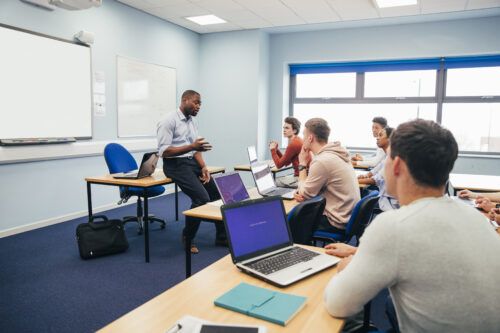Is progress a synonym for learning? In Ofsted’s terminology, I think it probably is. This might explain why the new FE inspection handbook contains no less than 181 references to the word “progress”. This not only refers to colleges’ progress in response to feedback from previous monitoring visits but for FE teachers, there is a real expectation that we are conducting regular and thorough checks on learning.
The Ofsted guidelines state that within the best providers, ‘Staff check learners’ understanding systematically and effectively’ and add that learners will be ‘making substantial and sustained progress’. Whatever we might feel about the process of inspection, it is hard to argue that checking progress within a lesson is not going to benefit both learners and teachers.
Beginning a lesson
Before you start, find out how much learners already know about a topic. This might include the following types of tasks:
Introduce the topic using some pictures and invite learners to write one or more sentences stating what they already know and one or more questions based on what they would like to find out. Padlet is a neat app/online tool for this. Learners grade themselves, giving a score out of 10 as to how much they know or how confident they feel about the topic. They revisit these at the end and adjust. For practical sessions, learners can set themselves an individual objective for the session. These can be written on a white board, or mirror if teaching in a salon, on a sticky note on the wall, computer or workbench. This makes it easier for the teacher to monitor individual progress as well as creating the opportunity for self-assessment at the end of the lesson.
During the lesson
With younger adults red, yellow, and green coloured cards or lollipop sticks can provide a quick and efficient indication of how learners feel about their progress throughout a lesson. A round of questioning following some input can help to consolidate learning. This can be teacher or learner-led, with individuals throwing a ball or soft toy at each other to ensure everyone is involved. Learners can note down key learning points as the session progresses. Coloured shapes can work well here, with learners adding these to a wall or board at any point in the lesson.
At the end of the lesson
Learners in pairs list two things they have learned and one question. The rest of the class has to try to answer. 3-2-1 – Learners summarise the lesson in three sentences, two words, and one picture. Goformative, Kahoot, and Socrative are all popular and easy to use online tools for creating tasks ideal for use in the plenary stage, as well as at other points in the lesson.





Leave a Reply